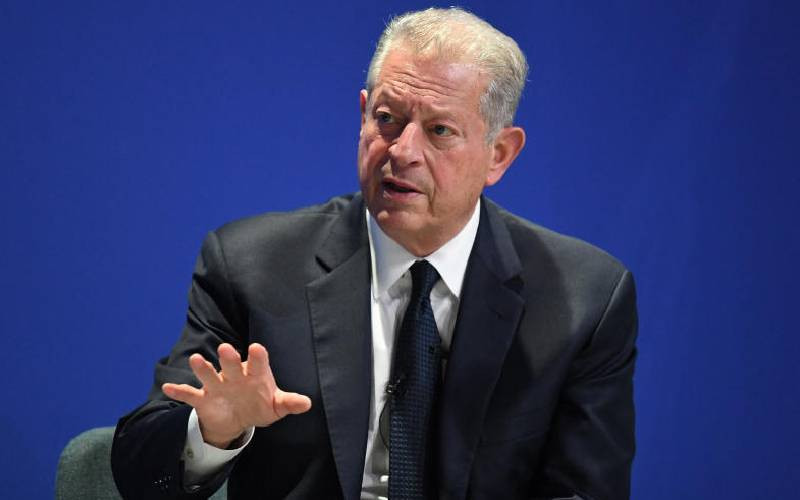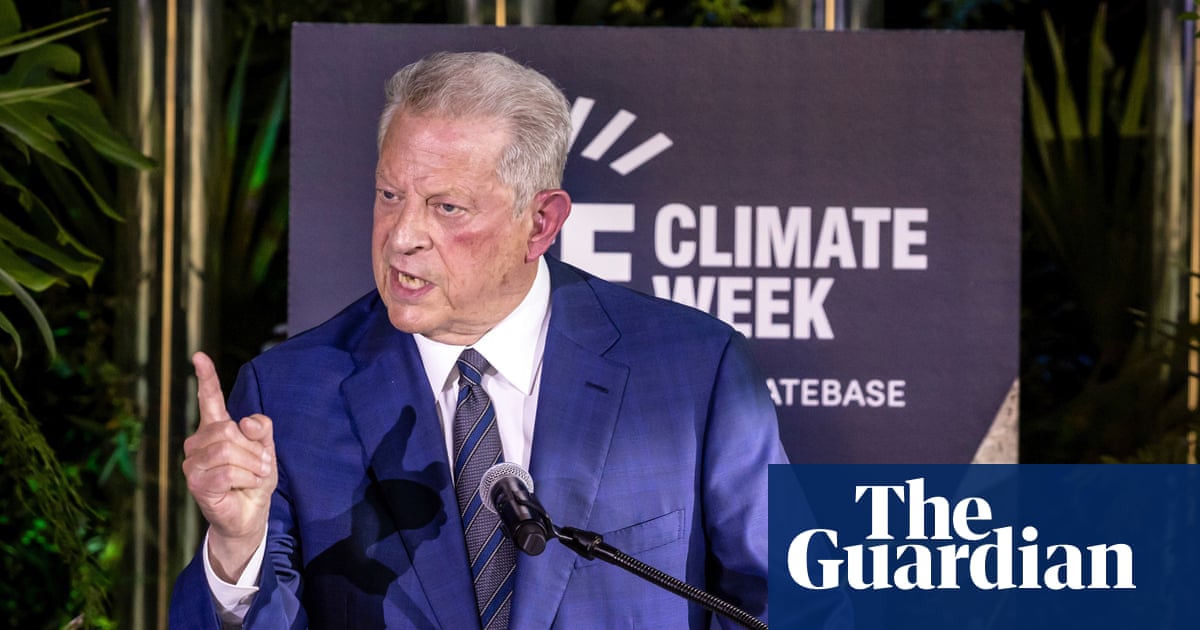New York's green energy plans disrupted by Empire Wind pause - Newsday
The Trump administration’s abrupt decision to halt marine work on the Empire Wind project off Long Islandis a fresh blowNew York state’s plans to convert to all-green energy by 2040, while inciting fears about which projects could be next.
The Empire project, years in the planning even before former Gov. Andrew M. Cuomo approved it in a high-profile ceremony with former vice president Al Gore in 2019, was to be a lynchpin of the state’s plan for 9,000 megawatts of offshore wind energy by 2035, with more than 800-megawatts earmarked for New York City. Its nearly 1,000-foot tall turbines were projected to be spinning just under 14 miles from the coast of Long Beach by 2027, at a cost of some $7 billion, Newsday has reported.
But the Department of the Interior’s decision earlier this month to put the project on hold pending further environmental review has caught state officials and wind-energy advocates by surprise, given that the project had been fully permitted by the federal government.
“This makes no sense,” wrote Kit Kennedy, managing director for power at the influential environmental group, the Natural Resources Defense Council. “The order cites no laws and supplies no facts to justify this troubling action.”
The move adds further uncertainty to other big wind projects that had been planned for the waters beyond Empire Wind in a New York State solicitation known as NY5 that had been redone in 2024 after a turbine maker failed to deliver on big 18-megawatt wind generators. At least two of the projects have since pulled out of the bidding, and the prospect of announcing winning bids while the Trump administration has a freeze on new federal permits for offshore wind is steeped in uncertainty.
Yet the New York State Energy Research and Development Authority, which is leading the state’s green-energy conversion, suggested the process was moving forward. “NYSERDA is continuing to work through the solicitation process, and details of the final contracts will be posted to our website once contacts are executed,” the agency said in an email from spokeswoman Deanna Cohen. Doreen Harris, chief executive of NYSERDA, declined to be interviewed.
Kevin Law, a former LIPA chief executive and chairman of Empire State Development, called the Trump administration’s recent moves “unchartered waters for offshore wind.”
Law, a longtime supporter of offshore wind and executive vice president of Tritec Development Group, noted that capital markets that fund such large long-term projects “hate uncertainty and they like predictable environments.”
Pausing projects like Empire Wind “makes securing the equity investment and the debt much more difficult realizing these permits can be pulled or stalled at any time,” he said.
But even amid the green-energy paralysis brought on by Trump’s policies, there are signs of life among some of the projects. While Empire Wind develop Equinor has complied with the order to halt work in federal waters, where the company had been preparing to use a Dutch vessel to dump rocks from Canada in a 66-foot radius around each of its 54 monopiles before hammering each into the ground, it continues to work on the project on land.
“The federal order applies to activities on the outer continental shelf,” Equinor spokesman David Schoetz wrote in an email. “Activities are ongoing at the South Brooklyn Marine Terminal to revitalize the terminal.”
Schoetz declined to answer questions about the daily cost to Equinor of the federal pause, whether Trump officials have requested any specific information about its environmental concerns, or how long Equinor is willing to hold out as project deadlines are missed. The company’s official statement hints at legal action.
“Empire is engaging with relevant authorities to clarify this matter and is considering its legal remedies, including appealing the order,” the company’s statement said.
Another Long Island project that has avoided many of the political and grass-roots pitfalls the Empire project has experienced is Sunrise Wind, where a flurry of work continued last week on a 17.5 mile cable from Holtsville to Smith Point. The last several thousand feet of the cable is being pulled by an offshore barge at Smith Point, in line with a schedule to have the land-based work largely completed by Memorial Day.
Some say the project has some of the same environmental concerns as the Empire project, but has responded to opposition by working with locals, including Suffolk County and Brookhaven Town, to smooth over concerns.
But others remain troubled by one element of the Sunrise project, which will rely on a massive offshore converter station to deliver its more than 900 megawatts of power from the waters off Massachusetts to Long Island.
Opposition groups, including commercial fishing interests, have submitted paperwork to the federal government expressing concern about the station’s drawing a maximum of 8 million gallons of sea water each day, returning it in a so-called “thermal plume” at a temperature of up to 90 degrees. The groups’ say the the system could present adverse environmental risks to marine life, particularly to Atlantic cod larvae and other sensitive species in the area.
Bonnie Brady, executive director of the Long Island Commercial Fishing Assoc., an industry group, in a 2023 letter to the federal agency, wrote that Sunrise Wind’s offshore converter station has “no place in the ocean,” noting its potential impact on tiny fish and fish larvae. She noted that open-water cooling systems for power plants were banned in New York State in 2011.
Officials at the EPA, the Department of the Interior and the National Oceanic and Atmospheric Administration declined to specify their environmental concerns about the Empire project, which doesn’t use such a cooling system. A Sunrise Wind spokeswoman didn't respond to a request for comment.
An April 16 letter to Equinor from the Bureau of Ocean Energy Management said the Empire construction pause was intended to allow the federal agency “time for it to address feedback it has received, including from the National Oceanic and Atmospheric Administration (NOAA), about the environmental analyses for that project. BOEM received this and other feedback regarding Empire Wind as an outgrowth of the review that the department is engaged in related to offshore wind projects.”
Officials at NOAA would not elaborate. As Newsday has reported, Empire was originally intended to mount its turbines on massive concrete foundations prebuilt in Albany and shipped down the Hudson River before being lowered in the ocean. The decision to turn to monopiles meant the project would incur considerably more potential impacts on marine mammals and other species from thousands of massive hammer blows to drive monopiles into the ground.
In a 2021 letter to Equinor at the time it made the switch, NRDC, the environmental group, noted that turning to pile-driving the monopiles “would result in far more damaging impacts on marine mammals and the ocean environment."
The NRDC at the time continued to urge Equinor to reconsider the concrete foundations, which “reduces the risk to marine wildlife, including the critically endangered North Atlantic right whale.” NRDC spokeswoman Rita Yelda said the agency’s stance on monopiles “hasn't changed. We're not opposed, but there are better options.”
Alena Walters, who leads a Long Island environmental group known as Sea Life Conservation, said she favored the recent decision by the Department of the Interior to pause the Empire Wind project.
She noted environmental reviews under the Biden administration “failed to take into account (offshore wind development’s) impacts on climate, weather, water current velocity, and irreversible alterations to not only marine life but marine ecosystems,” she wrote in an email to Newsday.

Mark Harrington, a Newsday reporter since 1999, covers energy, wineries, Indian affairs and fisheries.











